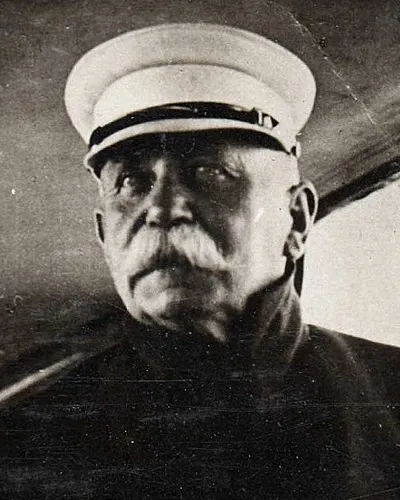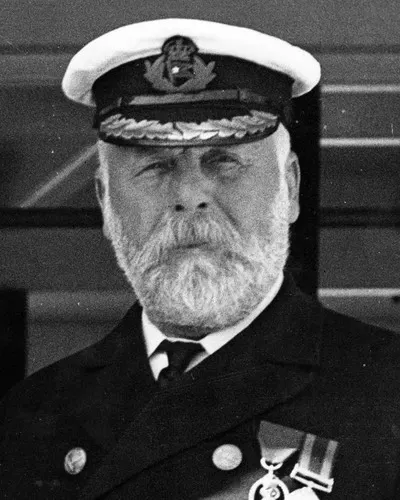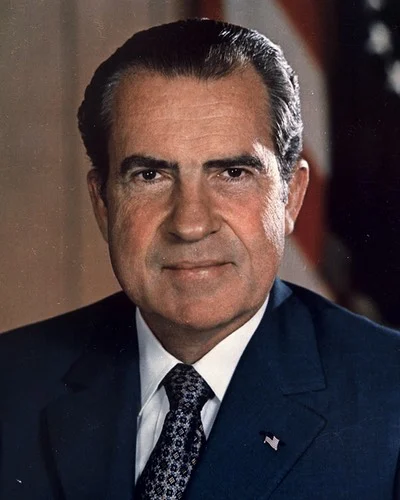Guy Fawkes got lucky the day he and his fellow conspirators were executed. As history’s most notorious terrorist was led to the scaffold he fell and broke his neck, avoiding the agonising castration and disembowelment that was the punishment for traitors in Jacobean England.
The lifeless Fawkes was still hung, drawn and quartered and the pieces of his body put on public display as a warning to others. But had he met his terrible end the fall guy for a sinister government plot?
Fawkes’ last minute capture had made him the the most famous of thirteen Catholic plotters who had, the previous year, tried to blow up the Houses of Parliament in an attempt to kill the protestant King James and his government in protest against their oppressive policies against Catholics in England.
Their failed conspiracy had the exact opposite effect to that intended, and anti-Catholic sentiment and persecution in Britain only worsened in the aftermath of their capture.
More than 400 years later, it remains one of the most famous events in British history, celebrated every November the 5th with firework displays and bonfires topped by effigies of Fawkes. Despite having become a cornerstone of British culture, just weeks after Fawkes’ arrest conspiracy theories had begun to circulate that questioned the official story of the gunpowder plot.
One Italian diplomat wrote in 1605 - “Some hold it as certain that there has been foul play and that some of the government secretly spun a web to entangle these poor gentlemen.”
Did the British government, then operating the most extensive and sophisticated intelligence service in Europe, really have no idea a group of plotters were literally working beneath their noses to kill the King?
Suspicion has long centred around the Robert Cecil, King James’ chief advisor and supposed government ‘spymaster’ and his actions before and after the plot. Had he set the men up so he could portray Catholics as a dangerous threat to British security, and further justify state attacks on their rights?
The story begins in the early hours on November the 5th 1605, when Parliamentary guards discovered the groups explosives expert Guy Fawkes preparing the fuses on 36 barrels of gunpowder deep in the cellars of the House, enough to destroy the entire building and everyone in it.
Fawkes refused to talk, only admitting to the false name John Johnston, but under fierce torture, including an interrogation by the King himself, he eventually broke and confessed to the plot and the names of his fellow conspirators.
The authorities had been on alert for a potential assault on the King ever since House of Lords peer Lord Monteagle received a mysterious letter the previous week hinting that he should steer clear of Parliament on the 5th as it was about to receive a ‘terrible blow’.
It is this anonymous letter to Monteagle, himself the brother-in-law of conspirator Francis Tresham, that is the source of much of the suspicion about the Gunpowder plot. If one of the plotters, presumably Tresham, had tipped him off, why had they done so in a way that was likely to expose their conspiracy?
Monteagle immediately informed Cecil about the letter, who ordered the search on the night of the 4th that resulted in the discovery of Fawkes red handed with the gunpowder. Cecil was virulently anti-Catholic and gleefully exploited the incident to ramp up the King’s paranoia about a Catholic threat on his life.
Historians have long pondered the question of whether it was Cecil himself behind the anonymous Monteagle letter. Following the principle of Cui Bono - ‘Who Benefits’, he certainly gained the most from the whole affair, using it as leverage to enact a series of ever more repressive measures against the country’s Catholic minority. The previously unpopular King James also saw a surge in his popularity after the failed attempt on his life.
Had Cecil, schooled in the art of statecraft by his notoriously devious father - Elizabeth the I’s chief advisor William Cecil and the legendary spymaster Sir Francis Walsingham, actually set the whole plot up himself and ensured its discovery, as part of his propaganda war against Catholicism?
Evidence For
An explosive letter
Late on the evening of October 26th a mysterious man called at the residence of William Parker, who sat in the House of Lords as Lord Monteagle. Whilst Monteagle himself was a Catholic, he was loyal to the protestant government of King James. Nevertheless, it seems a fellow Catholic was attempting to give him warning that his life was in danger.
Monteagle immediately took the letter to Robert Cecil, a search was organised, Fawkes discovered and the rest is history. However, some historians believe the entire affair of the anonymous letter was a theatrical scam concocted by Cecil, possibly with the complicity of Monteagle.
Whilst Monteagle pledged allegiance to the King, he was a Catholic was had written about how he found James ‘odious’. Yet despite this, and Cecil’s vitriolic hatred of Catholics, Cecil was scrupulous after the plot in both protecting Monteagle and rewarding him handsomely with a generous pension.
Was Monteagle on of Robert Cecil’s many spies? Had he already informed the Lord of the plot against the King, and was the letter merely a convenient way of ‘discovering’ the plot just in time to reap the maximum propaganda benefits?
It’s clear in the aftermath that Cecil attempted to erase any suspicion that might have pointed to Monteagle, his name is removed from several documents at the trial of the plotters, and critical letters Monteagle had previously written about the King are expunged from evidence. Cecil even goes as far to instruct the prosecution at the trial to speak favourably of Monteagle, and counter any rumours that he had betrayed the plot to Cecil.
Robert Cecil’s father, Elizabeth I’s chief advisor Lord Burgley, always welcomed plots against the Queen, the discovery of which not only strengthen his position but were of great political value in his machinations against the Queen's enemies. By all accounts his son had followed suit, assiduously using plots, both real and imagined, for the maximum political advantage to the King.
There is some evidence that Cecil may have been in the know long before the anonymous letter to Monteagle. A servant of one of the other key conspirators, Robert Catesby, claimed on his deathbed to have seen him with Cecil before November the 5th. It has also been speculated it was Cecil who arranged for a vault beneath the House to become vacant, to allow plotters to rent it.
Real evidence is, however scant. Perhaps the most tantalising suggestion of Cecil’s complicity in the plot comes from his own words. A few weeks before the Guy Fawkes was discovered, Cecil wrote to the King - “I spend my time in sowing so much seed as my poor wretched fingers can scatter, in such a season as may bring forth a plentiful harvest. I dare boldly say no shower or storm shall mar our harvest except it should come from beyond the middle region”.
The Midlands was were the majority of the plotters came from. It’s a perhaps deliberately vague statement from Cecil, but certainly seems to suggest he had some idea of the momentous events that would soon unfold.
Gunpowder, treason and plot
One issue often brought up by sceptics of the official story is the amount of gunpowder the conspirators had obtained. In 1601 gunpowder was made a government monopoly and became tightly regulated by the authorities, only to stored at secure government locations such as the Tower of London.
Somehow Fawkes and the other plotters had obtained a staggering 36 barrels of gunpowder, around 10,000 pounds worth. Although there was a glut of gunpowder at this time and it was obtainable on the black market, this is still a remarkable amount accounting for around a quarter of the entire stock of British gunpowder at the time.
That the fiendish Robert Cecil, with spies throughout London, would be unaware that the men had been stockpiling such huge sums of gunpowder, and had been transporting it across the Thames to a cellar under the House of Lords in broad daylight, seems highly improbable. Was Cecil, as many historians believe, allowing the plot to ‘mature’ so he could thwart it just before it reached its conclusion?
The fortuitous way that the plotters ended up with a stash of 36 barrels of gunpowder in this cellar is also worthy of note. Anticipating that Parliament would open in February 1605, the men attempted to dig a tunnel under the House, but were thwarted by it continually flooding from the Thames above them.
However this did not put an end to the plan, as their setback coincided with a delay in the opening of that years parliament from February to October. During this intervening time, a cellar directly under the House also became available to rent and the extra time allowed the men to stockpile enough gunpowder there to blow Parliament sky high.
The way the pieces conveniently fell for the 13 men has led many to speculate that Robert Cecil was pulling the strings from the shadows. It also seems the government were already well prepared to capture the men after the plots discovery.
When Fawkes was discovered on the 5th, several of his compatriots retreated back to Holbech House in the Midlands, some 130 miles northwest of London. On November 7th and 8th most of the men were killed or captured in an armed standoff with the Sheriff of Worcestershire and a posse of 200 men.
What is so suspicious about this is it came just hours after Fawkes’ confession under heavy torture on November the 7th. In an era before fast transport and instant communications, the speed of their capture was truly impressive and perhaps indicative that the authorities had prior knowledge of the plotters identities.
The Ashes of a Conspiracy
Much of the evidence that might shed light on the true facts about what happened on November the 5th 1605 is missing, fabricated or of dubious provenance.
With many of the plotters killed in the siege at Holbech House, and the others subjected to vicious torture, very little of the plotters own testimony survives, and what does is of questionable value in establishing the facts.
Fawkes own confession famously contains a barely legible signature, after he had endured hours of torture. If this confession is genuine and not concocted by Cecil himself, something he was known to do, it still remains unknown whether Fawkes told the truth as he knew it or just what his torturers wanted to hear.
Another conspirator named Thomas Wintour confessed to having been involving in the digging of the tunnel under the House, but no physical evidence of any tunnel was ever found in subsequent excavations in the 19th century, and it’s possible this detail at least was a government fabrication.
Cecil’s chief prosecutor of the conspiracy was the formidable Sir Edward Coke, one of the great legal minds of his age. Coke was certainly not adverse to fabricating evidence to help a case along, and was even known to hire forgers to alter confessions.
It’s clear in the case of Fawkes and Wintour that their confessions have been at least tampered with - edits, notes and alterations made by Coke and Cecil are clearly visible in some of the surviving copies.
Clearly the words of men obtained through torture, and possibly altered afterwards by their torturers, is not a good factual basis to understand what really happened on the first Bonfire Night. But it was the story the government wanted to hear, the one that was most politically useful to them and the one that remains in the history books today.
Evidence against
I’m just a patsy
All of the men involved in the gunpowder plot knew full well that treason would be met with the ultimate punishment Jacobean England had to offer. If caught, they would endure both torture and then an horrific execution.
They would be hung only to be cut down before death. In their weakened state they would be castrated, slit open across the abdomen and their intestines and organs pulled out and burnt beside their body.
It seems unlikely anyone other than a true believer, prepared to die a Catholic martyr, would risk such an agonising death. The simple fact that all thirteen of the conspirators were indeed killed or executed in the year following Fawkes discovery suggests that none of them were acting as government infiltrators within the plot.
There is no extant evidence than any of the men ever claimed they had been set up or that the government had had any knowledge or involvement in their plot. Facing certain death anyway they would have had nothing to lose in doing so if it was true.
It’s certainly possible it was one of the conspirators who was responsible for sending Lord Monteagle the warning letter, but this suggests naivety and poor judgement more than complicity.
Too close to call
If none of the men themselves were acting as government spies, is it possible that Robert Cecil had learnt of their plot quite early in its fermentation and decided to allow it to unravel so he could step in and foil before it reached its conclusion?
This sounds credible if not for how late in the day Guy Fawkes was rumbled. To allow the men to stockpile 36 barrels of gunpowder beneath Parliament and to be just hours away from blowing up the King and the entire British establishment would have been extraordinarily reckless.
Indeed despite the political mileage they were able to extract from it, it was a major embarrassment to the King and his advisors that they had come so close to been destroyed by one giant Catholic fireball, exposing to all how soft and vulnerable the underbelly of the British Crown actually was.
If Robert Cecil had really manipulated the plot for his own ends, it would have made more sense for it to have been discovered earlier, late enough in its advancement that it could be portrayed as a genuine threat but not so late that it made the King and his administration look so weak.
Ultimately it was probably happenstance that the gunpowder plot turned out to be so advantageous to those it was meant to destroy. As for Guy Fawkes, the man who is cursed to burn atop thousands of bonfires around Britain every year on November the 5th, perhaps history has been unkind to him.
He was by all accounts a devout and earnest man who was fighting a repressive and deeply tyrannical government engaged in what amounted to ethnic cleansing. Many Catholics like Fawkes felt they had no choice but to attempt something so foolhardy with their very existence under threat.
In recent years the image of Guy Fawkes has been somewhat reclaimed from the flames by anti-capitalist anarchist groups like Anonymous. Inspired by the use of a Fawkes mask by the character of V in Alan Moores graphic novel ‘V for Vendetta’, thousands of people now wear it during demonstrations around the world against government tyranny.
If Guy did die the victim of the machinations of a sinister and repressive government, he is perhaps now, hundreds of years later, gaining some small portion of revenge.
Was Guy Fawkes a patsy in a state-sponsored false flag conspiracy designed to persecute Catholics? - add your comment below














